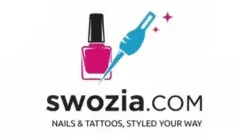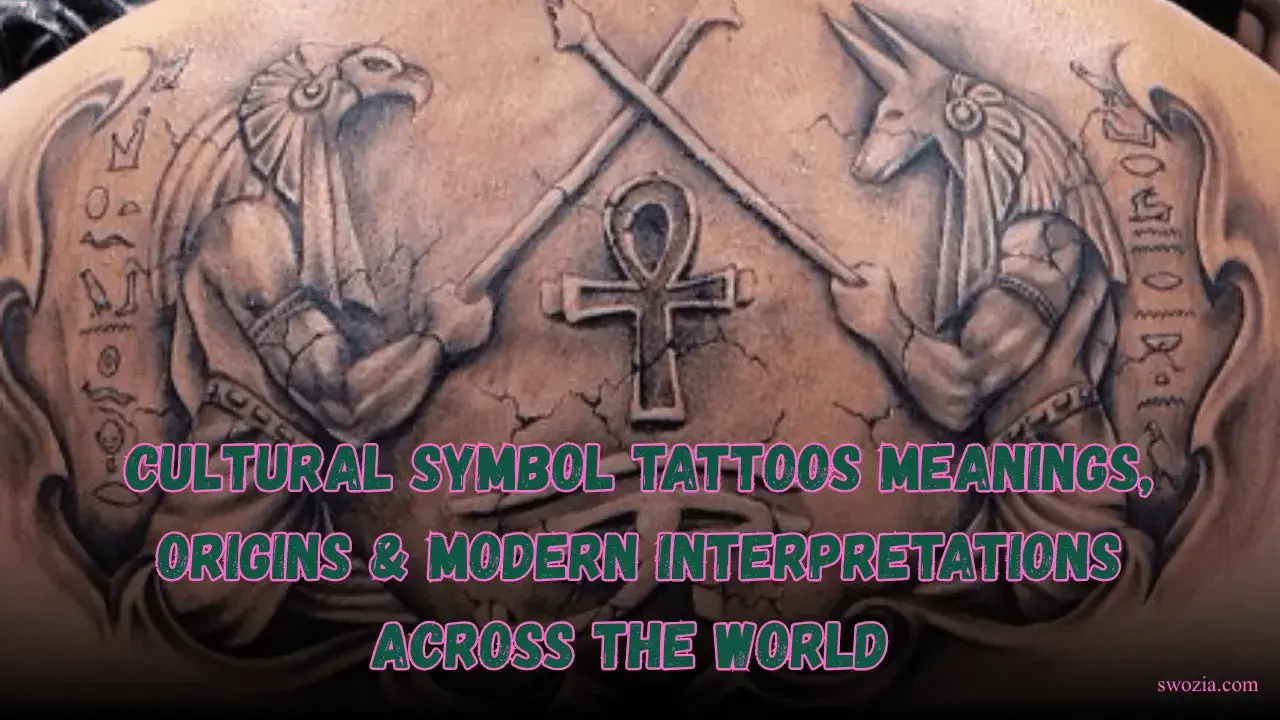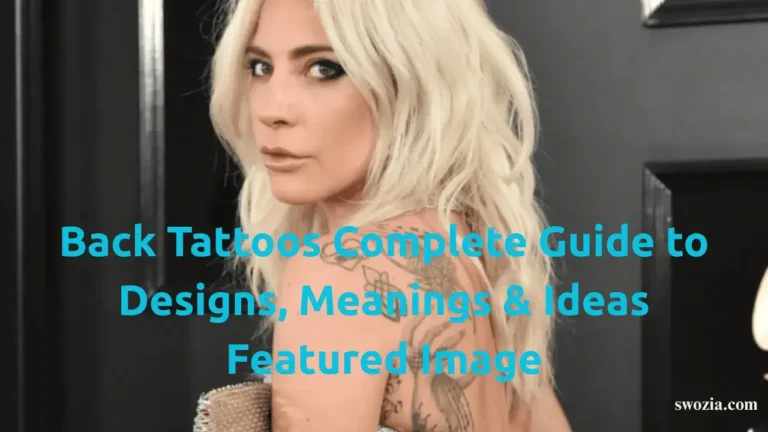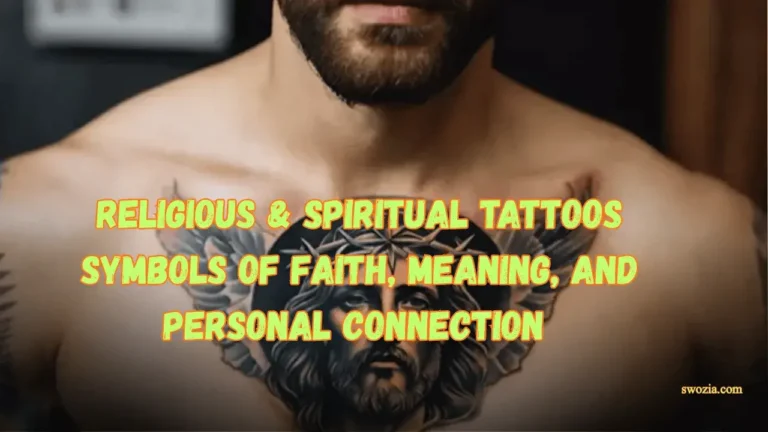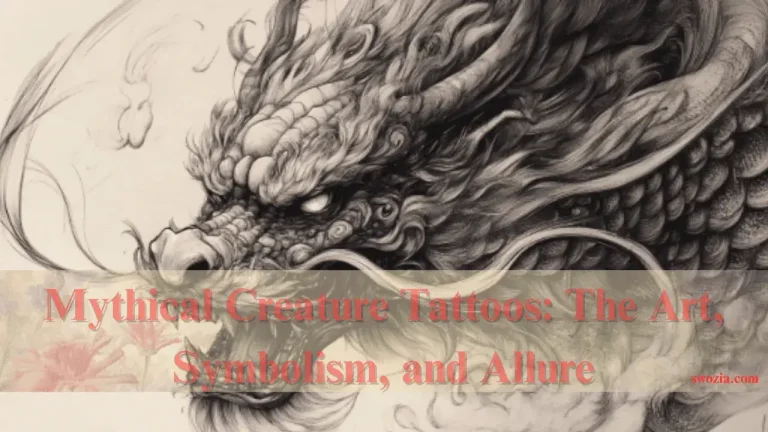Cultural Symbol Tattoos: Meanings, Origins & Modern Interpretations Across the World
Tattoos have always been more than just body art they are a living language of identity, heritage, and belief. Cultural symbol tattoos hold deep significance across civilizations, representing stories passed down through generations. From the sacred Maori patterns and ancient Egyptian symbols to Japanese Kanji and Celtic knots, each design carries its own history, meaning, and emotion.
In today’s world, these tattoos have evolved into powerful expressions of personal and cultural pride, blending traditional artistry with modern creativity. Understanding the origins and symbolism behind these cultural tattoos isn’t just about style it’s about respect, connection, and authenticity. In this guide, we’ll explore the meanings, histories, and modern interpretations of cultural symbol tattoos, helping you choose a design that truly resonates with your story.
Table of Contents
Understanding the Power Behind Cultural Symbol Tattoos
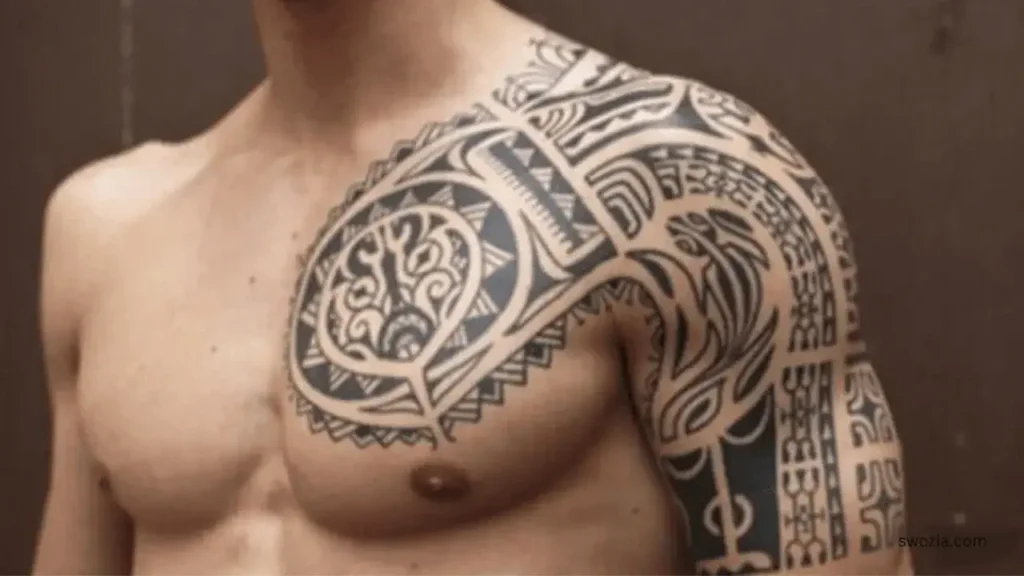
Tattoos have long served as a form of storytelling a way for individuals and communities to express identity, faith, and belonging. Cultural symbol tattoos go even deeper: they embody the collective wisdom, myths, and traditions of entire civilizations. Each mark on the skin reflects a powerful intersection of art, spirituality, and cultural heritage.
The Deeper Meaning of Symbolic Ink
While modern tattoos often emphasize aesthetics or trends, symbolic tattoos rooted in culture carry profound meaning. In many societies, tattooing was once a sacred act, performed by spiritual leaders or tribal elders as part of rites of passage, protection rituals, or social ranking. For instance, Polynesian tattoos (known as tatau) represented family lineage and warrior status, while Native American symbols were connected to nature, spirit animals, and ancestral guidance.
Even today, people choose cultural tattoos not merely for beauty but to express values, beliefs, or ancestral connections. The ink becomes a bridge between the visible and invisible between who we are and where we come from.
From Ancient Rituals to Modern Art
Historically, tattooing was a sacred language a visual archive of identity and belonging. Ancient Egyptians inked symbols like the Ankh and Eye of Horus to signify life and divine protection. In Japan, Irezumi tattoos represented courage, honor, and personal philosophy. Similarly, Celtic knotwork symbolized eternity and the interconnectedness of life.
In modern times, tattoo culture has evolved beyond ritual to become a global art form. Artists blend traditional cultural symbols with contemporary techniques, creating designs that both honor their origins and reflect personal narratives. This balance of heritage and innovation is what makes cultural tattoos timeless they’re a celebration of humanity’s shared creativity and history, told through skin and ink.
Popular Cultural Symbols and Their Tattoo Meanings
Across the globe, tattoos have always been visual stories each line, curve, and symbol reflecting the history and spirit of a culture. Cultural symbol tattoos are among the most meaningful and timeless forms of body art, often chosen for their deep spiritual, emotional, and historical resonance. Below are some of the most popular symbols and what they represent in their original traditions.
Japanese Kanji and Irezumi Motifs
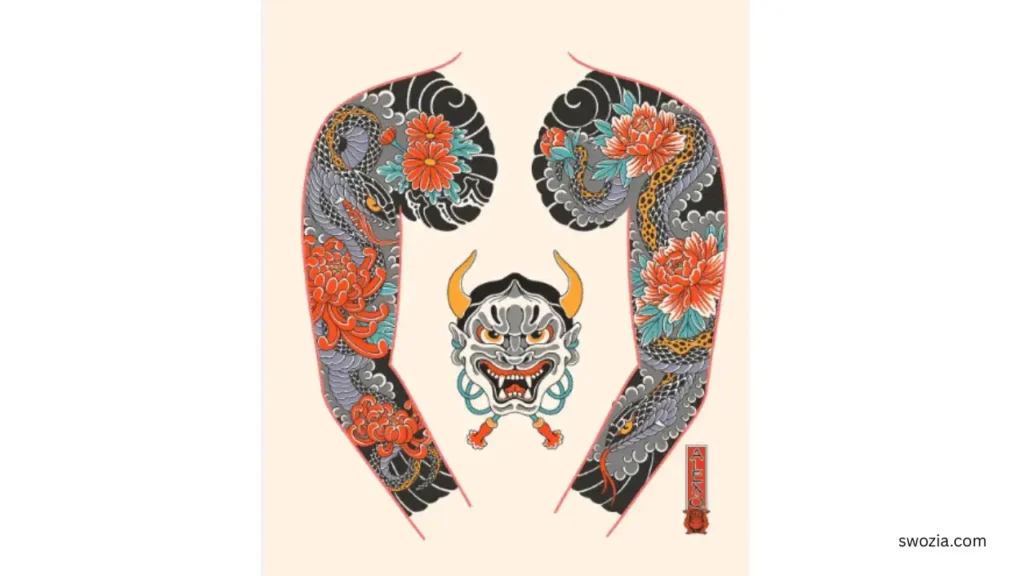
Japanese tattooing, known as Irezumi, is one of the most recognized forms of symbolic body art in the world. These tattoos are rich in cultural symbolism and aesthetic beauty.
- Dragons Represent wisdom, strength, and protection. In Japanese folklore, dragons are benevolent guardians of humanity.
- Koi Fish Symbolize perseverance and ambition, inspired by the koi’s legendary struggle to swim upstream.
- Lotus Flowers Represent purity and spiritual awakening, rising beautifully from murky waters.
- Samurai & Oni Masks Stand for bravery, discipline, and the eternal balance between good and evil.
Japanese Kanji tattoos also hold deep meaning, with characters representing concepts like “love,” “courage,” or “peace.” However, accurate translation and respectful use are essential to avoid cultural misinterpretation.
Polynesian and Maori Tattoos
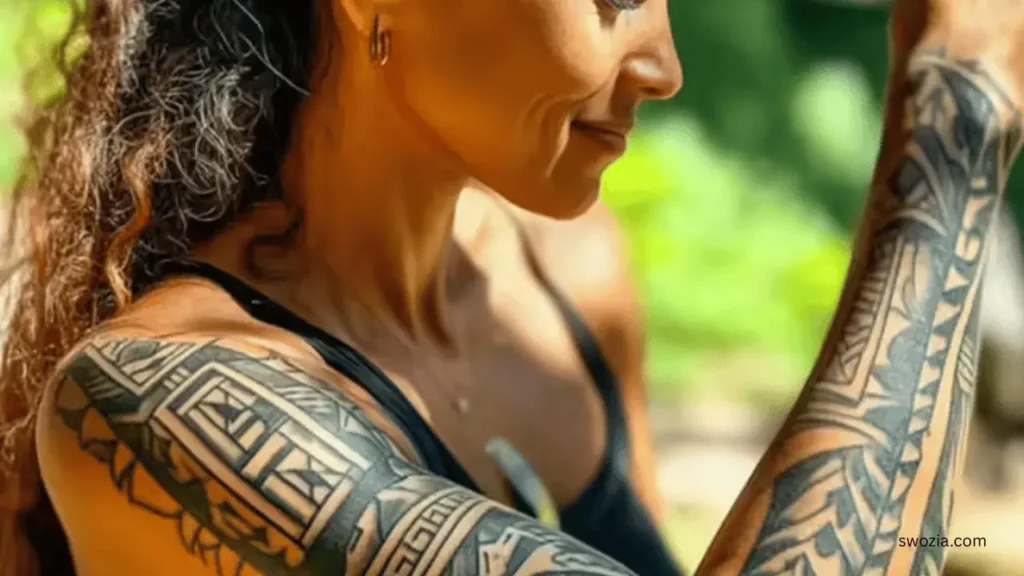
Among the most ancient tattoo traditions are those of Polynesian and Maori cultures. These tattoos, known as tatau (Polynesia) and ta moko (New Zealand), are not merely designs — they’re sacred genealogical records.
- Enata (Human Figures) Symbolize ancestors, life experiences, or relationships.
- Spearheads and Shark Teeth Represent strength, protection, and courage.
- Korus (Spirals) In Maori art, these signify new beginnings, growth, and harmony.
Each pattern tells a unique story about the wearer’s lineage, social role, and achievements. Authentic Polynesian tattooing is deeply ceremonial, and many modern artists encourage research and permission before adopting these sacred symbols.
Native American and Indigenous Designs
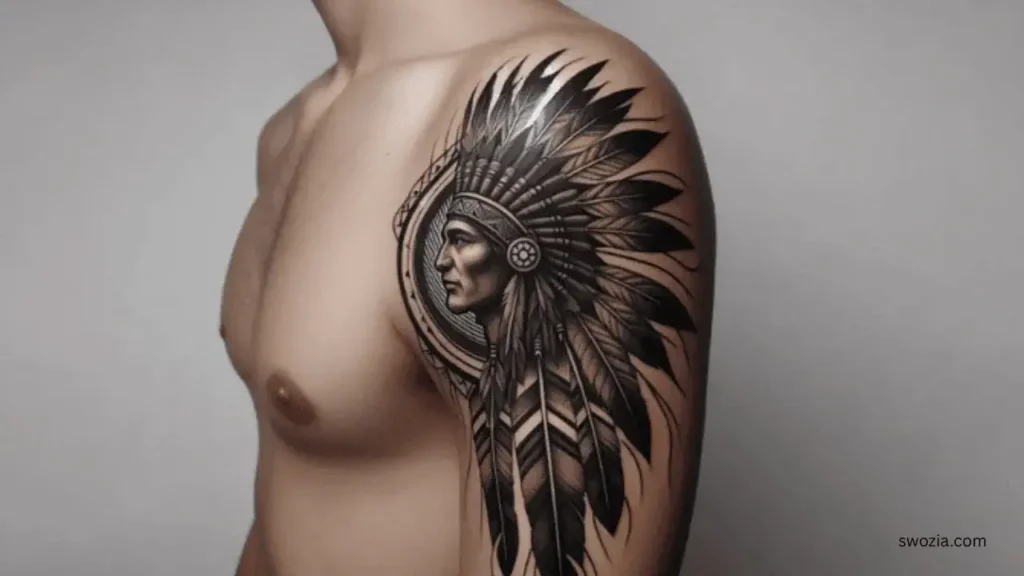
In Native American and other Indigenous traditions, tattoos are often connected to spiritual beliefs and nature. They serve as protective emblems, honor ancestral spirits, and symbolize harmony with the earth.
- Feathers Represent freedom, spiritual ascension, and connection to the divine.
- Animals (Wolf, Bear, Eagle) Embody power, loyalty, and guidance from spirit animals.
- Dreamcatchers and Sun Symbols Offer protection and balance, reflecting harmony between body, mind, and spirit.
It’s vital to approach Indigenous tattoo styles with deep respect, as many of these designs hold sacred meanings that are not meant for casual reproduction.
Celtic Knots and Norse Runes
European tattoo traditions are rich with Celtic and Norse symbolism, each representing intricate philosophies about life, time, and destiny.
- Celtic Knots Endless loops symbolizing eternity, unity, and interconnectedness.
- Triquetra (Trinity Knot) — Represents life, death, and rebirth or body, mind, and spirit.
- Norse Runes Ancient alphabetic symbols used for protection, wisdom, and fate. For example, Algiz signifies protection, while Fehu symbolizes wealth and prosperity.
These tattoos are often chosen for their intricate design and spiritual depth, connecting wearers to ancient European heritage and myth.
African and Egyptian Symbol Tattoos
Africa’s tattoo heritage is equally powerful, rooted in ancient spirituality and cultural identity. Egyptian symbols, in particular, have become globally popular due to their timeless meaning.
- Ankh The “key of life,” symbolizing eternal existence and divine protection.
- Eye of Horus Represents healing, power, and protection against evil.
- Adinkra Symbols (West Africa) Each symbol carries wisdom or a moral teaching, such as Gye Nyame (“Except for God”) and Sankofa (“Return and get it”), emphasizing learning from the past.
Modern tattoo enthusiasts embrace these designs for their beauty and profound philosophical value, but it’s crucial to understand and honor their origins.
A Universal Language of Symbolism
What makes cultural symbol tattoos so fascinating is their universality. Whether it’s a Celtic knot or a Maori pattern, each symbol speaks a language of meaning that transcends borders. They remind us that, despite cultural differences, humans everywhere have sought ways to express identity, faith, and purpose through art.
The Cultural Significance and Ethical Considerations
While cultural symbol tattoos are admired for their artistry and deep meaning, they also carry a layer of responsibility. Every symbol, pattern, or motif you choose has roots in a living culture one that holds emotional, historical, and sometimes sacred value. Understanding this significance is essential to appreciating the beauty of these tattoos without unintentionally crossing ethical boundaries.
Avoiding Cultural Appropriation
One of the most important discussions surrounding cultural tattoos today is the line between appreciation and appropriation.
- Cultural appreciation involves learning about and honoring the meaning behind a symbol, often with consent or guidance from someone within that culture.
- Cultural appropriation, on the other hand, occurs when sacred or traditional symbols are used superficially without understanding, respect, or permission.
For example, Polynesian tribal tattoos (tatau) or Native American spiritual symbols often represent specific ancestral stories or ranks within their communities. Reproducing these designs merely for fashion can be disrespectful or even offensive. Before getting a cultural tattoo, take the time to research its origins, speak to artists familiar with its history, and understand whether it’s appropriate for you to wear that symbol.
Appreciation is about participation and respect not possession. The more you learn about a design’s roots, the more meaningful and authentic your tattoo will be.
Working with Authentic Tattoo Artists
Choosing the right artist is just as important as choosing the right symbol. Seek out tattoo artists who have either cultural ties to the design’s origin or deep expertise in traditional tattooing styles. These professionals understand not only the visual elements but also the spiritual and historical meanings behind the symbols they create.
An authentic tattoo artist will:
- Discuss the cultural background of the design in detail.
- Modify elements to ensure the tattoo is respectful and personalized to you.
- Avoid reproducing sacred or restricted imagery without permission.
Many Indigenous and traditional artists now work globally, helping educate clients about their heritage while preserving their cultural identity through art. Supporting them not only ensures authenticity but also helps sustain traditional knowledge and craftsmanship.
Respecting Sacred Symbols
Some symbols are considered sacred and are traditionally reserved for people within specific communities or spiritual roles. Examples include certain Maori facial tattoos (ta moko), Samoan Pe‘a designs, or specific Hindu and Buddhist symbols used in religious ceremonies.
If you’re drawn to a particular cultural motif, consider exploring its meaning and alternatives. You can work with your artist to create a personalized design inspired by the symbol’s philosophy rather than copying it directly. This approach preserves the essence of the culture while ensuring your tattoo reflects your individual story.
A Responsible Approach to Cultural Symbol Tattoos
Ultimately, the power of cultural symbol tattoos lies in their ability to connect us to history, to ancestry, and to one another. By choosing a design respectfully and understanding its roots, you become part of a larger narrative that honors diversity rather than diminishes it.
Tattoos can celebrate global artistry and shared humanity, but only when approached with awareness, research, and genuine admiration. Your ink should not only look beautiful it should mean something beautiful, too.
Modern Interpretations of Cultural Symbol Tattoos
As tattoo culture evolves, cultural symbol tattoos have found new meaning in modern society. No longer confined to geography or tradition, these designs now bridge the past and present — uniting heritage with personal expression. Artists and wearers alike are reimagining ancient symbols in ways that honor their roots while embracing contemporary aesthetics and storytelling.
Fusion of Global Designs
One of the most exciting developments in modern tattooing is the blending of cultural styles. Today, many artists combine traditional patterns with modern linework, minimalism, or abstract forms to create hybrid designs that feel both timeless and innovative.
For example:
- A Japanese koi fish rendered in minimalist geometric form.
- A Celtic knot intertwined with Polynesian patterns to represent unity across cultures.
- A Mandala-inspired piece merged with African Adinkra symbols for balance and strength.
These fusion tattoos demonstrate how art can transcend cultural borders while still respecting its origins. The key is intentionality knowing what each element represents and ensuring it’s used in a way that honors the culture it came from.
Storytelling Through Ink
In the modern era, tattoos have become deeply personal forms of storytelling. People use cultural tattoos to reflect identity, ancestry, or values that shape their journey.
For instance, someone of mixed heritage might design a tattoo that combines motifs from both sides of their lineage a Polynesian wave paired with a Celtic spiral, symbolizing connection and continuity. Others might choose a sacred symbol not because of ethnicity, but because they resonate with its universal message Such as enlightenment, rebirth, or resilience.
The focus has shifted from simple decoration to narrative art where each tattoo becomes a unique visual autobiography, connecting the wearer to a larger cultural tapestry.
Tattoos as Cultural Revival
In many Indigenous and ancestral communities, tattoos are not merely fashion they are a revival of lost traditions. Colonization and cultural suppression once silenced many tattooing practices, but today, these communities are reclaiming their heritage with pride.
From Maori ta moko and Samoan tatau to Native American and Filipino tribal designs, artists are rediscovering traditional tools, rituals, and meanings. For these groups, tattoos are a declaration of survival, resilience, and identity a visible act of cultural preservation.
Modern appreciation for these revived practices has helped educate global audiences about their significance. When approached with humility and respect, these tattoos become a bridge of cultural understanding rather than appropriation.
Contemporary Aesthetics and Symbolic Adaptation
Modern technology and global tattoo trends have also redefined how traditional symbols are represented. Artists use fine-line techniques, watercolor effects, and digital design tools to reimagine ancient motifs with new energy.
For example:
- Egyptian hieroglyphs integrated into minimalist forearm tattoos.
- Nordic runes etched with modern dotwork shading.
- Tribal-inspired patterns blended with watercolor or blackwork styles.
These creative adaptations show how cultural symbol tattoos can evolve while preserving their essence keeping ancient meanings alive in fresh, visually striking ways.
Caring for Cultural Symbol Tattoos
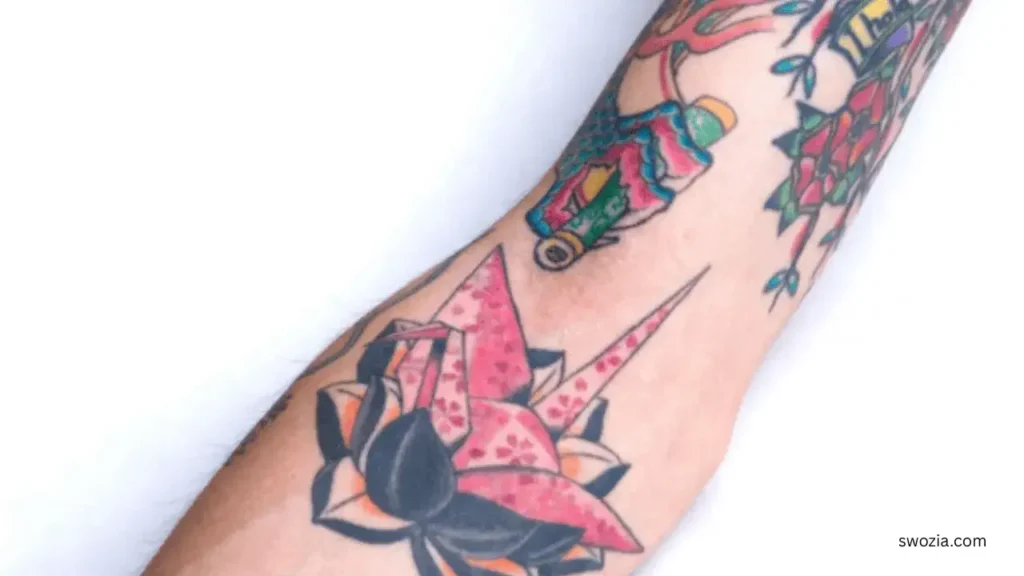
Getting a tattoo that represents culture, spirituality, or ancestry is a powerful experience but preserving its meaning and appearance takes care and responsibility. Proper tattoo aftercare not only ensures your design heals beautifully but also honors the cultural story it carries. Cultural symbol tattoos deserve the same respect after they’re inked as they do in the design process.
Aftercare for Longevity
The healing phase is crucial for any tattoo, especially for intricate designs with cultural detail and symbolism. Proper aftercare helps maintain color, linework, and depth, ensuring your tattoo looks vibrant for years.
Essential aftercare steps:
- Keep it clean and protected: Wash gently with fragrance-free soap and lukewarm water. Avoid scrubbing or soaking the area.
- Apply recommended ointment: Use a thin layer of tattoo-friendly moisturizer or ointment (like Aquaphor or a specialized tattoo balm) to prevent dryness.
- Avoid direct sunlight: UV rays can fade pigments and blur details. Once healed, always apply sunscreen (SPF 30 or higher) on exposed tattoos.
- Don’t pick or scratch: Let the tattoo peel naturally to avoid scarring or patchy color loss.
- Stay hydrated and eat well: Healthy skin recovers faster and retains ink better.
Following your artist’s aftercare instructions is especially important if your tattoo includes fine cultural details or symbols, as improper healing can distort their shapes or meanings.
Maintaining Symbolic Integrity
Cultural tattoos often carry deep meaning they might represent ancestry, spirituality, or a sacred story. Over time, these designs can fade or stretch with age, so maintaining their visual clarity is part of respecting their cultural essence.
Here’s how to preserve the symbolic integrity of your tattoo:
- Schedule touch-ups when needed: Over years, some ink fading is natural. Work with your artist to refresh the lines and color while keeping the design authentic.
- Avoid unnecessary modifications: Resist the urge to add unrelated imagery that could alter the cultural or spiritual significance of the piece.
- Protect it from damage: Excessive sun exposure, tanning, or harsh skincare products can damage pigment and meaning alike.
Caring for a cultural symbol tattoo means protecting both the art and the story it represents ensuring its message stays clear and respected.
Mindful Representation Through Time
As your tattoo becomes part of your identity, it’s important to remain mindful of its cultural origins. Continue to learn about its background, symbolism, and evolution over time. Many wearers find that their tattoos deepen in meaning as they gain greater appreciation for the cultures that inspired them.
By maintaining your tattoo with physical care and cultural respect, you ensure it remains not just beautiful but meaningful. A tattoo’s longevity isn’t just about color and line; it’s about carrying its story forward with pride and integrity.
Inspiration: Choosing the Right Cultural Symbol
Selecting the perfect design for a cultural symbol tattoo is more than an artistic decision it’s a meaningful journey of self-discovery and respect. The right tattoo connects your personal story with timeless cultural wisdom. Whether it reflects your heritage, beliefs, or values, the key is to choose a symbol that speaks to you on a deeper level while honoring the culture it originates from.
Aligning Symbols with Personal Meaning
Before finalizing a design, take time to explore what each symbol represents and how it resonates with your life experiences. A tattoo should feel authentic not just visually appealing.
Ask yourself:
- Does this symbol reflect who I am or what I value?
- Do I understand its meaning within its original culture?
- Can I honor the culture this symbol belongs to through how I wear it?
For example, a lotus flower can symbolize rebirth and enlightenment, while a Celtic knot represents life’s interconnectedness. A tribal pattern might embody strength or family heritage. Understanding these meanings ensures your tattoo reflects your true intentions rather than just a trend.
Consulting with Artists and Cultural Experts
If you’re inspired by a specific culture’s tattoo tradition, working with the right artist is crucial. Seek out tattooists who specialize in traditional or cultural designs preferably with direct experience or heritage in that culture. They can help you interpret symbols accurately, adjust designs respectfully, and avoid misrepresentation.
Tips for a respectful design process:
- Do your research: Read about the cultural origin and symbolism before consulting your artist.
- Ask questions: Learn about the stories and values behind your chosen symbol.
- Seek permission where appropriate: Some sacred or tribal designs are meant only for community members or specific roles.
- Personalize your tattoo: Combine elements or adapt styles in a way that keeps the cultural meaning intact while making it uniquely yours.
This collaborative approach ensures your tattoo becomes a cultural celebration rather than appropriation an authentic reflection of appreciation, curiosity, and creativity.
Balancing Cultural Authenticity with Personal Storytelling
Today’s tattoo world encourages blending art and identity. While many people use cultural symbols to express their personal journeys, it’s important to balance self-expression with respect for origin. You can draw inspiration from global symbols while ensuring that your final design represents shared human values such as courage, love, transformation, or balance ideas that transcend borders.
A great cultural tattoo doesn’t imitate; it interprets. It carries the soul of a symbol and transforms it into something personally meaningful.
Choosing with Purpose and Pride
The most powerful tattoos are those chosen with awareness and emotion. When you understand the story behind your ink, you carry more than a design you carry legacy. Cultural symbol tattoos have the ability to remind us who we are, where we come from, and what we stand for.
Take the time to find the right symbol. Reflect on its meaning. Learn its roots. And when you finally wear it, do so with pride, gratitude, and connection because every symbol has a story worth telling.
Conclusion: Tattoos That Connect the Past and the Present
Cultural symbol tattoos are more than just artistic expressions they are living stories that link generations, beliefs, and traditions. Each symbol carries layers of meaning, connecting the wearer to their ancestry, culture, and personal identity. From ancient tribal markings to modern fusion designs, these tattoos embody the timeless human desire to tell stories through art and ink.
In today’s interconnected world, wearing a cultural tattoo is both a privilege and a responsibility. When approached with understanding, respect, and authenticity, it becomes a bridge one that unites the wisdom of the past with the creativity of the present. It’s not about owning a symbol, but honoring the spirit behind it.
Your tattoo becomes a narrative a conversation between who you are and the cultures that inspire you. It’s a celebration of humanity’s shared language of symbolism, artistry, and meaning.
For more about Tattoo Ideas Please visit swozia.com.
FAQs
Are cultural symbol tattoos considered cultural appropriation?
Not always if done with respect, understanding, and permission. Research and consult with artists from that culture.
What are the most popular cultural tattoos today?
Polynesian, Japanese, Celtic, and Norse designs are widely sought for their deep symbolism and visual artistry.
Can I mix symbols from different cultures?
Yes, if you understand their meanings and combine them thoughtfully. Avoid using sacred symbols casually or decoratively.
